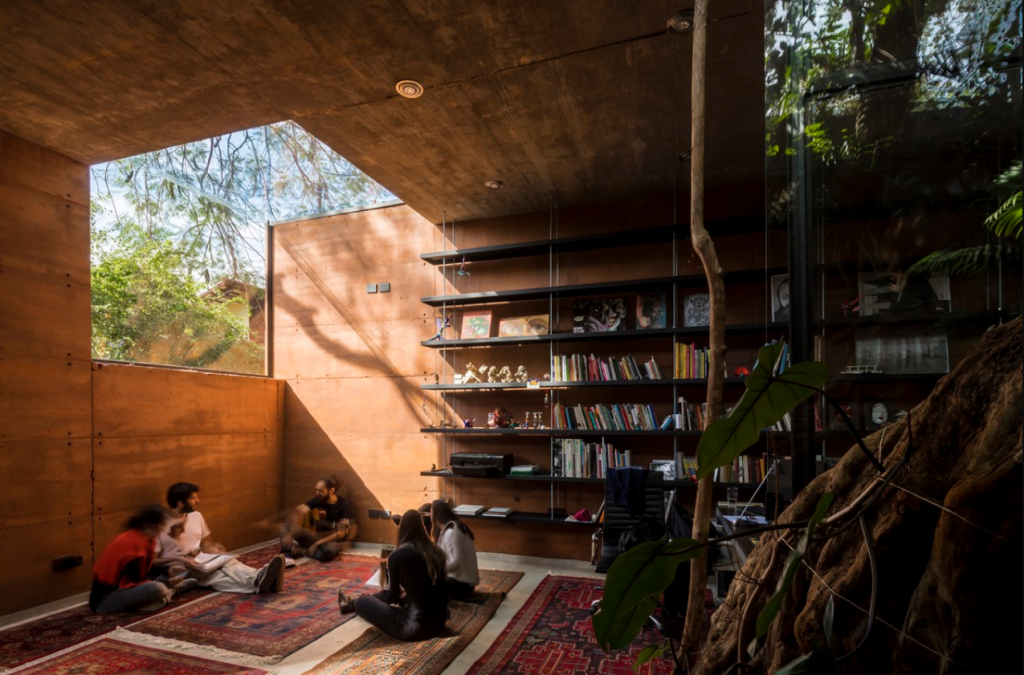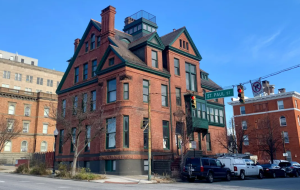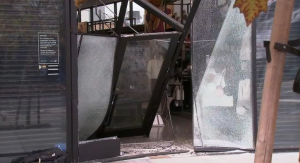By Janet Eastman | The Oregonian/OregonLive

Architect Frank Lloyd Wright revolutionize the way we live. He championed concepts of great rooms and indoor-outdoor living. He promoted energy-saving radiant-heat concrete flooring and perfected home silhouettes and materials that mirror the landscape. Many of Wright’s innovations, some a century old, are still favored today. And it’s time to celebrate him.
The world’s most famous architect was born on June 8, 1867. On Saturday, June 10, the only Wright-designed structure built in Oregon, the Gordon House at 869 W. Main Street in Silverton, will open its doors for a birthday party.
From 11 a.m. to 3 p.m., visitors can see the interior of the two-story house with decorative geometric fretwork and walls of glass rising 12 feet to the ceiling ($5 for adults, under 18 are free). Guided, 45-minute tours of the only Wright residence open to the public in the Pacific Northwest are offered throughout the year ($20, thegordonhouse.org).
“All proceeds support the site’s educational and preservation mission,” says Robin Cornuelle of the Gordon House, which was saved from demolition and moved near the Oregon Garden where it was reconstructed and opened to the public in March 2002. Since then, more than 100,000 visitors have explored Wright’s handsome approach to functional, affordable living.
Moving a masterwork
In 1957, while Wright was still creating the exalted Guggenheim art museum in New York City, he accepted a $25,000 commission to design a modern house for Evelyn and Conrad Gordon on their farmland alongside the Willamette River near Wilsonville.
Wright was almost 90 years old and had spent more than two decades developing suburban housing with high architectural quality at a moderate price. He called his handsome dwellings “Usonian,” which he defined as living in harmony with the land in the United States of North America (USONA) and envisioned them having an organic appearance as if rising “out of the ground and into the light.” His Usonian designs, as seen at the Gordon House, typically had a flat roof with generous, shade-making overhangs.
The cedar-and-concrete-block Gordon House was completed in 1963, four years after Wright died. Floor-to-ceiling doors in the great room opened to the landscaped grounds. Each of the two upstairs bedroom balconies originally faced the Willamette River or Mount Hood.
Perforated boards, or fretwork, screens were made to draw in light, ensure privacy and serve as an economical alternative to draperies or stained art glass, according to historians who successfully nominated the Gordon House to be listed on the National Register of Historic Places.
The open floor plan concept developed by Wright is evident in the great room, which has dining and living areas as well as a concrete-block fireplace and a library with built-in seating.
Evelyn Gordon was a weaver and artist who saw her home as an accommodating sequence of galleries to display her paintings, prints and sculptures.
Original paintings, many by Northwest artists, hung on every wall, including in the kitchen where cinder blocks rose 15 feet to meet a skylight. She had Native American weavings, a metal sculpture by James Shull and — sharing Wright’s passion for Japanese art — a Haku Maki woodblock print.
Evelyn Gordon was a widow when she died in 1997 and the property, which had years of deferred maintenance, was sold to new owners who tried to get the Gordon House removed from the Clackamas County List of Historic Structures to have it demolished.
Instead, the Frank Lloyd Wright Building Conservancy, a Chicago-based organization devoted to preserving Wright’s built legacy, negotiated an agreement with the owners to donate the significant dwelling.
A stipulation of the agreement required the 2,133-square-foot house be relocated within 105 days, starting Nov. 30, 2000. The structure was carefully dismantled and the four sections were moved 26 miles south to the Oregon Garden site over three days, arriving March 11, 2001, four days ahead of the deadline, say historians.
The original north-south orientation was preserved and interior walls are intact, as are all doors, cabinets, wood trim, furniture and shelving. The Gordon House “continues to present an accurate representation of Frank Lloyd Wright’s Usonian house design and subsequent construction for Conrad and Evelyn Gordon,” say historians.
The Gordon House Conservancy and volunteers care for the house and grounds.
Visitors can see every room, including the kitchen — what Wright called the “workspace” — and his ideas of paneled refrigerator doors, under-cabinet lighting and other features for cooking efficiency, comfort and speed that continue to influence kitchen design today.
Wrights for sale
Wright houses for sale across the country reveal the escalated value of his work.
The horseshoe-shaped, 1955 Tiranna (“running water”) mansion in New Canaan, Connecticut, with 7,000 square feet of living space is listed at $8 million.
The Richard Lloyd Jones House in Tulsa, Oklahoma, built in 1929 of alternating piers of square glass windows and concrete “textile” blocks, is for sale at $7,995,000.
The last house the architect designed before he died in 1959, the circular Norman Lykes House, constructed of colored concrete block to blend with the Phoenix Mountains Preserve, is for sale at $7,950,000.
And the Fawcett House, designed by Wright in 1955 to showcase seamless living indoors and out, sits on 76 acres in California’s Central Valley city of Los Banos, and is listed at $3,825,000.
The Frank Lloyd Wright Building Conservancy maintains a list of Wright-designed homes on the market.
Professional commercial roofing contractors are a crucial part of protecting any building from the weather. Roof materials range from the traditional asphalt shingles, to more innovative choices such as eco-friendly or metal solutions. If you like or are interested in what we offer the solutions to your problem and in a professional way we will help you if you want to investigate further, go here The Roof Technician roofing services in Toronto For a roof to last, it is important that you maintain and install the roofing system correctly. Smart roofing technologies and an emphasis on sustainability have been recent advancements. It is important to stay informed on these advancements in order to make informed decisions about roofing for either new construction or for renovations.






